The Eatwell Guide is Crown copyright. Source: Public Health England in association with the Welsh government, Food Standards Scotland and the Food Standards Agency in Northern Ireland.
OK so we know the use of the word ‘shocking’ in the title is maybe a bit OTT and not really our usual style but we feel really strongly about the issues we have covered here.
It actually is shocking that the new Eatwell Guide completely ignores several papers which have been written in the last few years disputing the link between saturated fat and heart disease.
We are STILL told to avoid saturated fat, and that margarine and unsaturated oils are the “healthier” choice. Butter, which is undoubtedly a more nutritious and healthier food than fake and processed margarine has now been completely removed from the plate. Sigh.
Two years ago we created 6 plates of food using the foods we could see on the old ‘Eatwell’ Plate. We have put ‘Eatwell’ in inverted commas, because as you will see, this is a debatable name for the old plate and the new guide.
We made these plates of food to illustrate how truly awful the Eatwell Plate was. It’s now 2016 and a new Eatwell Guide has just been released (16th March), sadly the new guide is just as terrible as the old.
What is maddening about this is that there are hardly any changes. They have at least removed the Can of Cola, Skittles and Battenburg cake that featured prominently on the old plate!
How can Public Health England claim that this new guide is going to “improve the nation’s health and wellbeing”, when they have even stated in their own Eatwell literature that the revised guide process “took the current intakes of the most commonly consumed foods in the UK, applied the revised government dietary recommendations and modelled the fewest possible changes needed to achieve the proposed recommendations.
Using this method ensured that any adaptations made to the model were realistic and not too far removed from the current dietary habits of the UK population”.
In other words, we didn’t want to tell people to stop eating the way they currently do or change the plate too drastically. How is this approach going to address the current health situation of the UK?
Sadly the UK is the fattest nation in Europe!
According to a Government Briefing Paper entitled ‘Obesity Statistics’ dated 2nd February 2016:
- 24% of adults are obese and a further 36% are overweight, making a total of 60% of English people in the overweight category (in Scotland this figure stands at 65%).
- 9% of children are obese by the age of 5 and a further 13% are overweight.
- Between 10 and 11 years of age 19% are obese and an additional 14% are overweight, making a total of 33% of children age 10-11 being overweight.
- In England in 2014, pharmacies dispensed over 500,000 prescriptions for the drug Orlistat (costing £15.3 million), which aims to treat obesity by stopping the body from absorbing fat from food.
Type II Diabetes
- Since 1996 the number of people diagnosed with diabetes has more than doubled, from 1.4 million to almost 3.5 million. 90% of these people have Type II Diabetes.
- Obesity is the most potent risk factor for Type II Diabetes, accounting for 85% of the risk.
- On average there are 135 diabetes-related amputations each week in England.
We have re-created some plates of food, following the ‘new’ Eatwell Guide, which you will see throughout this post. They look far from appetising and the nutritional content of each plate is very concerning.
For example this seemingly ‘healthy’ lunch example includes two slices of wholemeal toast with low fat spread, ½ a can of baked beans, 2 slices of low fat cheese, 1 banana, handful of raisins and a small bar of chocolate (note the guidelines state to eat chocolate less often and in small amounts however it does still feature in the guide).
This one plate of food contains 120.1g of carbohydrate and 60.9g of sugar! That is well over the 25g-30g of daily sugar Public Health England tell us we should be aiming for and that is just from one meal. Yet this is a standard meal that the new Eatwell Guide promotes.
Have a look at the ingredients in the ‘wholemeal’ bread too:
Wholemeal Flour, Water, Caramelised Sugar, Yeast, Wheat Protein, Salt, Soya Flour, Fermented Wheat Flour, Emulsifiers: E472e, E481, Vegetable Fat (Rapeseed, Palm), Flour Treatment Agent: Ascorbic Acid
And in the UK food only needs to contain 50% wholegrain to call itself a wholegrain product. The bread states “This product contains 61% Wholegrains”. In Germany food must contain at least 90% wholegrain to be allowed to label itself as wholegrain. Sounds a lot more sensible!
What’s Wrong with the “New” Eatwell Guide?
Problem Number 1: Conflicts of Interest
How can the government justify publishing an ‘Eatwell’ Guide that was reviewed by a group of people who have blatant conflicts of interests regarding what constitutes ‘healthy’?
Public Health England established an external reference group to provide advice on aspects of the new plate/guide and review its contents. The chosen 10 members ranged from the British Nutrition Foundation (BNF) to Food and Drink Federation (FDF) and sadly all but 3 of these members had/have existing conflicts of interest.
When we say conflicts of interest we mean that members of these nutritional bodies comprise a shocking number of FAKE FOOD companies such as Coca Cola, Heinz, Kelloggs, Unilever, Warburtons, Weetabix and Alpro Soya and that’s just naming a few!
It’s not surprising then that the final published Eatwell Guide includes many items that are produced and sold by these companies. And yes, we know that the guide contains drawn images instead of photographed ones, and that these companies aren’t actually advertised within the guide, but they may as well be! Members of the group reviewing the plate are associated with Heinz and Warburtons and funnily enough baked beans are a featured source of protein and processed bagels (packaged ones) are a source of ‘healthy’ wholegrains.
The BNF also has associations with Unilever who produce hundreds of processed products such as ice cream, Flora margarine and sunflower oil.
Public Health England have even created the added bonus of five ‘Eatwell Guide Menus’ which regularly feature a healthy dollop of reduced fat spreads.
It’s no wonder Flora (Unilever) gleefully posted on Facebook on the 18th March that they are, “delighted that unsaturated fats, like the oils in our spreads, now have a dedicated section of the Eatwell guide and are recognised as the healthy option”. See studies linked below that show they are definitely no such thing.
#PoweredbyProcessedFoods would be more appropriate in our opinion!
Problem Number 2: We are told “Base your Meals on Starchy Foods”
The original Eatwell Plate was introduced in 2007 and even back then Dr Briffa criticised the plate with an article entitled UK Food Standards Agency continues to mislead the public on the ‘value’ of starchy foods.
Starchy foods are nowhere near as nutrient dense as meat, fish, eggs and dairy so how can Public Health England justify telling us that a whopping 50% of our calories should come from starchy carbohydrates, which if we were to eat the ones they suggest, would provide little nutritional value?
Processed white bagels, processed low fat spread, processed low fat cream cheese, tinned tuna, crisps…little nutritional value in this Eatwell Guide meal!
- The Dietary Reference Value for carbohydrates is 260g per day (or around 50% of total daily energy intake on a 2000 calorie per day diet)
- And total sugars can be as high as 90g per day (18% of energy intake)
- But to confuse things, the new advice is that your intake of free sugar should not exceed 5% of total dietary energy. So now the public have to distinguish between free sugars and total sugars, even though this is very unclear on packaging labels.
How Public Health England think we can eat a diet that contains 50% carbohydrates yet low sugar is beyond us anyway. The carbohydrates they suggest we eat such as breakfast cereals, processed white bagels, white rice etc. have a high glycaemic load (which has been associated with a greater risk of type 2 diabetes and other adverse health effects) and we all know these will quickly convert to glucose (sugar) within the body.
Two weetabix and two slices of wholemeal toast (a pretty standard breakfast for a lot of people) will start your day off with over 60g of easily digested carbohydrate, add in a banana and some raisins to get 2 portions of your 5 a day and you’ll hit 105g of carbohydrate! Top it all off with some processed soya milk and low fat spread. Yummy.
The egg is the most nutritious item on this plate and the lowest in sugar, yet sadly most people still believe they need to limit their consumption of eggs.
I’m sure some people will say that the problem is that people don’t follow the guidelines. But statistics from both the Scientific Advisory Committee on Nutrition’s (SACN) Carbohydrate and Health report and the National Diet and Nutrition Survey shows that people on the whole have been following the guidelines as set out in the Eatwell Plate/Guide:
- The Eatwell Guide states men should be eating 2500 kcal/day and women 2000 kcal/day. The National Diet and Nutrition Survey found men were eating on average 2111 kcal/day and women 1613 kcal/day.
- The Dietary Reference Intake for carbohydrate is 260g per day for adults (50% of dietary energy). Mean intakes of total carbohydrate in adults and children aged 4 years and over were 200-240g/day according to the SACN report. Mean intake of total carbohydrate as a percentage of total dietary energy was 46% in adults.
- The Eatwell Guide states total fat should make up no more than 35% food energy. Mean intake of total fat met this guideline in all age/sex groups except for men aged 65 years and over, for whom, on average, total fat provided 36% food energy.
- The Eatwell Guide states we should all be aiming for 5 portions of fruit and veg per day. In fact, adults aged 19 to 64 years on average consumed 4.1 portions of fruit and vegetables per day, while adults aged 65 years and over consumed 4.6 portions per day.
The below diagram from Health Survey for England shows that between 2007 and 2014, obesity in the UK fluctuated between 24% and 26%, with the proportion of people overweight also staying pretty constant.
Clearly the Eatwell Plate has done nothing to address the problem of an overweight and obese public since it’s introduction in 2007.
So why on earth have Public Health England spent time and tax payers money putting together a new Eatwell Guide essentially giving us exactly the same message? This ‘updated’ dietary advice is not going to address the obesity problem!
Problem Number 3: Eat Low Fat Foods & Low Fat Dairy
The new guide states:
“Have some dairy or dairy alternatives (such as soya drinks – aaaarrrgh, don’t get us started on soy); choosing lower fat and lower sugar options.” The guide shows semi-skimmed milk, low fat soft cheese, low fat yogurt, cheese and soya milk in the dairy section.
Recent research suggests this is yet again poor advice. A 2013 meta-analysis of 16 studies comprehensively reviewed the data on the relationship between the consumption of dairy fat and high-fat dairy foods, obesity, and cardiometabolic disease.
They concluded “The observational evidence does not support the hypothesis that dairy fat or high-fat dairy foods contribute to obesity or cardiometabolic risk, and suggests that high-fat dairy consumption within typical dietary patterns is inversely associated with obesity risk.”
Another study from 2014 concluded, “Total dairy food intake was inversely associated with the likelihood of global obesity. Participants in the highest tertile of whole-fat dairy intakes had significantly lower odds for being obese compared with those in the lowest intake tertile”
Although the data is not conclusive, it seems crazy that Public Health England choose to ONLY promote low fat dairy products on the new guide!
Problem Number 4: Choose Unsaturated Oils & Spreads and Cut Down on Saturated Fat
- Although some fat in the diet is essential, generally we are eating too much saturated fat and need to reduce our consumption.
- Unsaturated fats are healthier fats that are usually from plant sources and in liquid form as oil, for example vegetable oil, rapeseed oil and olive oil.
- Swapping to unsaturated fats will help to reduce cholesterol in the blood, therefore it is important to get most of our fat from unsaturated oils.
- Choosing lower fat spreads, as opposed to butter, is a good way to reduce your saturated fat intake.
- Cutting down on saturated fat can lower your blood cholesterol and reduce your risk of heart disease.
This section is one of the most infuriating things about the advice in the Eatwell Guide because it is not evidence based. Below we link to three key papers that do not back up the claims that “unsaturated fats are healthier fats” and that we would be better off replacing saturated fats with unsaturated oils and spreads.
Paper 1
In a systematic review and meta-analysis published in 2014 and funded by the British Heart Foundation and the Medical Research Council, the study authors looked at the evidence for associations between fatty acids and coronary disease. They concluded “Current evidence does not clearly support cardiovascular guidelines that encourage high consumption of polyunsaturated fatty acids and low consumption of total saturated fats.”
Paper 2
In this paper published in the British Medical Journal in 2013, they evaluated the effectiveness of replacing dietary saturated fat with omega 6 unsaturated fat, for the secondary prevention of coronary heart disease and death.
Their conclusions were:
- Advice to substitute polyunsaturated fats for saturated fats is a key component of worldwide dietary guidelines for coronary heart disease risk reduction.
- However, clinical benefits of the most abundant polyunsaturated fatty acid, omega 6 linoleic acid, have not been established.
- In this cohort, substituting dietary linoleic acid in place of saturated fats increased the rates of death from all causes, coronary heart disease, and cardiovascular disease.
- An updated meta-analysis of linoleic acid intervention trials showed no evidence of cardiovascular benefit.
- These findings could have important implications for worldwide dietary advice to substitute omega 6 linoleic acid, or polyunsaturated fats in general, for saturated fats.
Paper 3
In this paper, also published in the British Medical Journal in 2015 the authors systematically reviewed associations between intake of saturated fat and all cause mortality, cardiovascular disease (CVD), coronary heart disease (CHD), stroke and type 2 diabetes. The concluded “Saturated fats are not associated with all cause mortality, CVD, CHD, ischemic stroke, or type 2 diabetes.”
This quote from Uffe Ravnskov in ‘Is Saturated Fat Bad?’ sums this up:
“For decades a reduction of the intake of saturated fat has been the cornerstone in dietary prevention of cardiovascular disease.
The main argument for this advice is its alleged influence on blood cholesterol.
However, several recent trials have found no such effect in spite of intakes up to five times higher than the recommended upper limit. Even if true, the effect on blood cholesterol is indirect evidence.
The crucial question is if a high intake is harmful or if a reduction leads to health benefits.
Almost all epidemiological and experimental studies are in conflict with this assumption; indeed several observations points to the opposite.
There seems to be an urgent need for a revision of the present dietary guidelines.”
In light of the above papers, how can Public Health England boldly make the statements “unsaturated fats are healthier fats” and “cutting down on saturated fat can reduce your risk of heart disease” while simultaneously claiming to promote evidence based public health?!
We’re not the only ones who think this new advice is terrible…These comments were left on Public Health England’s Facebook page when they posted about the new guide:
Two Alternative Models for Healthy Eating Guidelines
The British Association for Applied Nutrition and Nutritional Therapy (BANT) is the professional body for Registered Nutritional Therapists. They have come up with their own version of a healthy eating guide which they call the BANT Wellbeing Guidelines.
Have a look at the guide they have produced:
What is great about this guide? No processed foods are shown on the plate! Why can’t the Eatwell Guide reflect this excellent model? There should be no place for processed foods on a guide to a healthy diet and certainly no encouragement to eat junk and snack foods.
An approach that we prefer even to the BANT model is the approach the Brazilians have taken. In stark contrast to our guidelines look at the Brazilian Government’s Dietary Guidelines, published in 2014. They propose that the Brazilian population follow 3 “Golden Rules” which are:
- Make freshly prepared dishes and meals the basis of your diet
- Be sure oils, fats, sugar and salt are used in moderation in culinary preparations
- Limit the intake of ready-to-consume products and avoid those that are ultra-processed.
These guidelines are so much better than what we have! How much simpler is the message:
“Do not eat processed food”?
If Public Health England really do want the guide to cater to all walks of the British public, even those they state are “less engaged and more likely to have a poor diet” then surely this would be a much easier message to follow.
Anyone and everyone can understand the simple message not to eat processed food and to make freshly prepared meals the basis of your diet.
One other thing the Brazilian dietary guidelines warn against is “Be wary of food advertising and marketing. The purpose of advertising is to increase product sales, and not to inform or educate people. Be critical and teach children to be critical of all forms of food advertising and marketing.” Simple. Brilliant advice.
Summary
There are many more areas of the Eatwell Guide that can be criticised, we have only covered a few in this post.
But even just looking at the points we have raised it is easy to see that something more needs to be done.
Public Health England state on their website that the organisation “exists to protect and improve the nation’s health and wellbeing, and reduce health inequalities.”
How do these ‘new’ dietary guidelines and their associations with the conflicts of interest we have mentioned above even remotely allow them to uphold this statement?
The ‘Eatwell’ Guide is a biased and unreliable source of information and we are outraged that processed and FAKE FOOD companies hold so much sway with the Government’s guidelines for our health.
If you are as annoyed as we are about these awful dietary guidelines then please share this post with your friends and family to help us spread the message. This needs to be highlighted and brought to the attention of the British public!
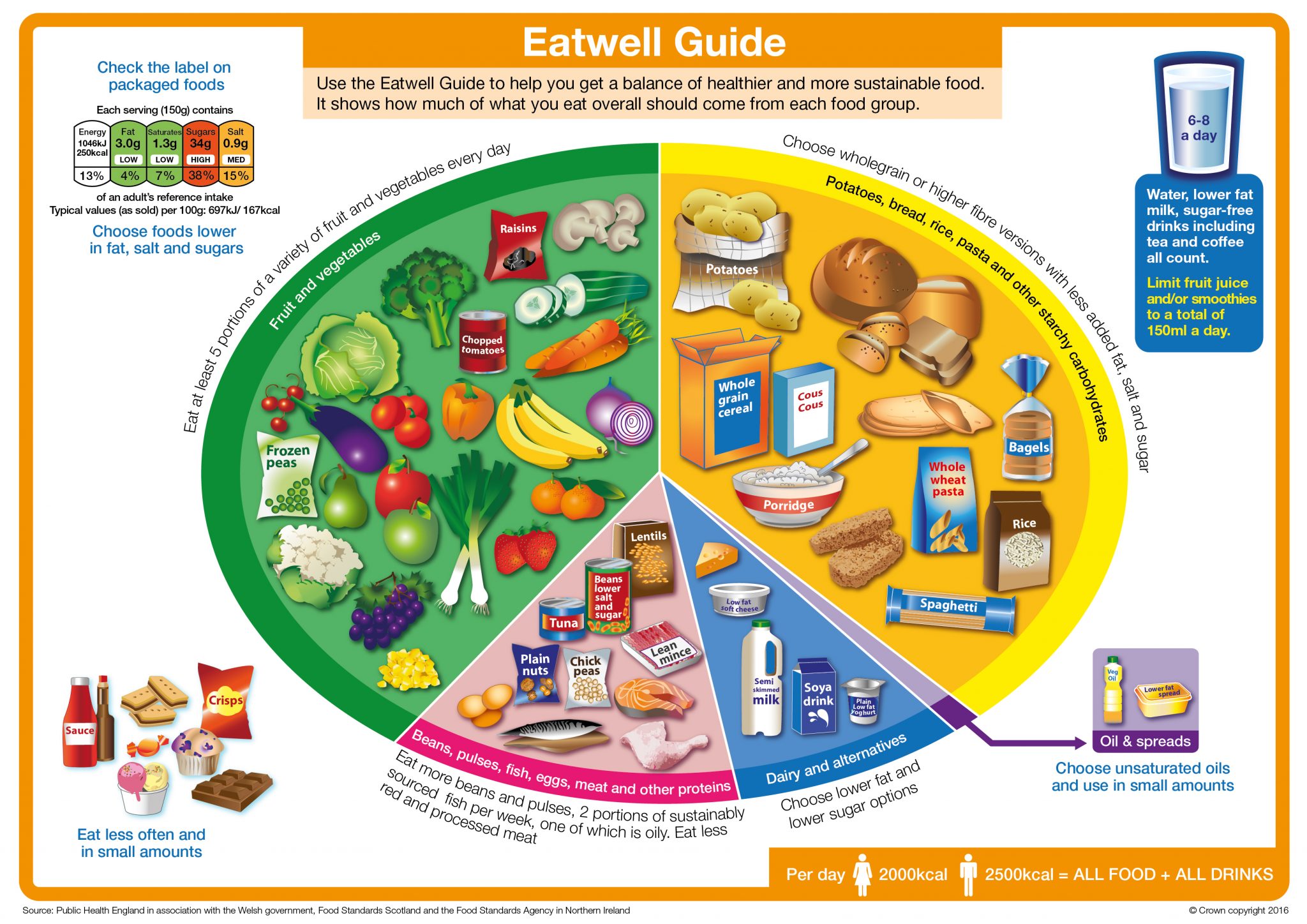


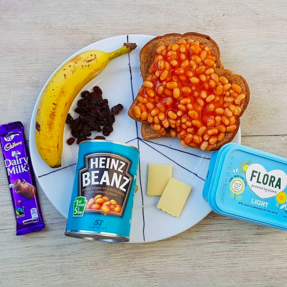
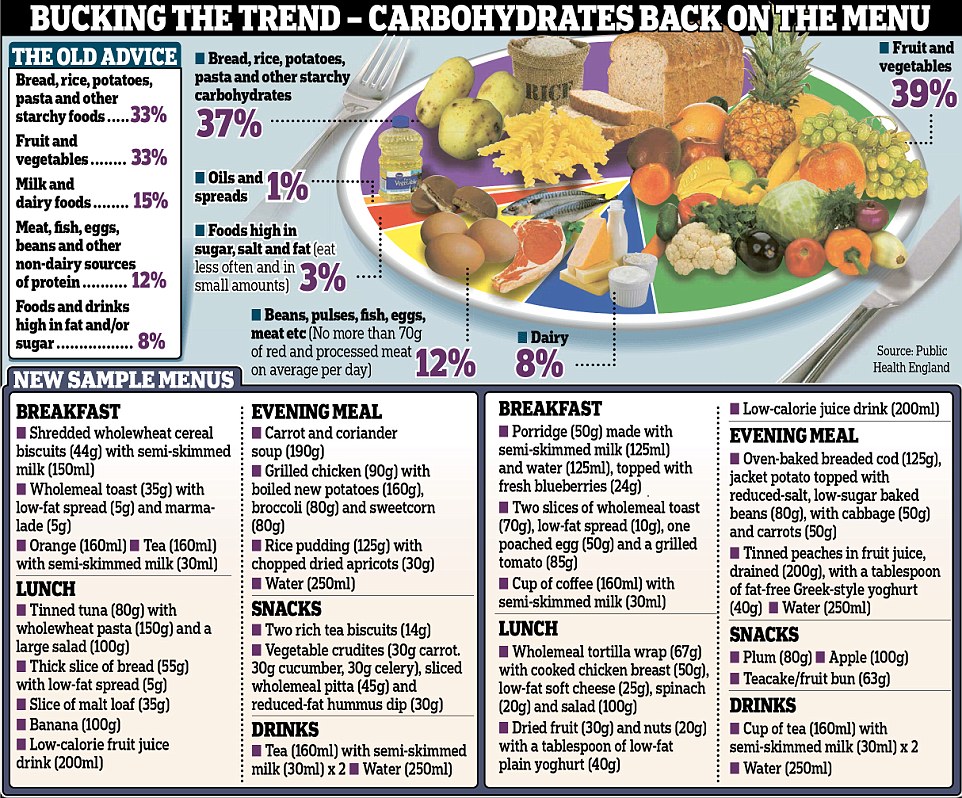
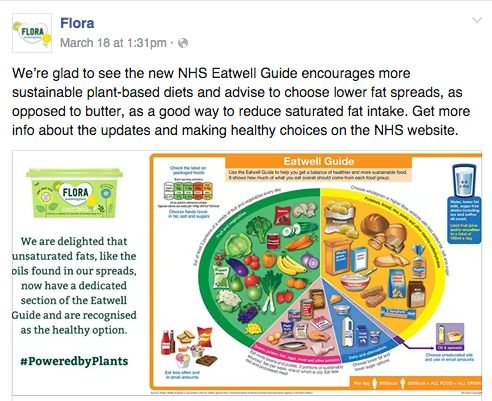
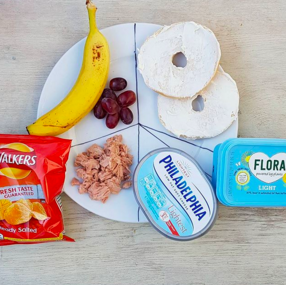
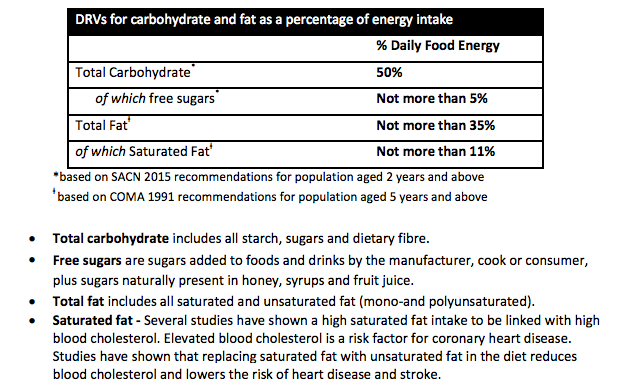
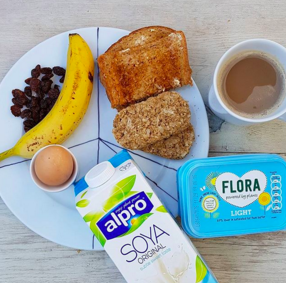
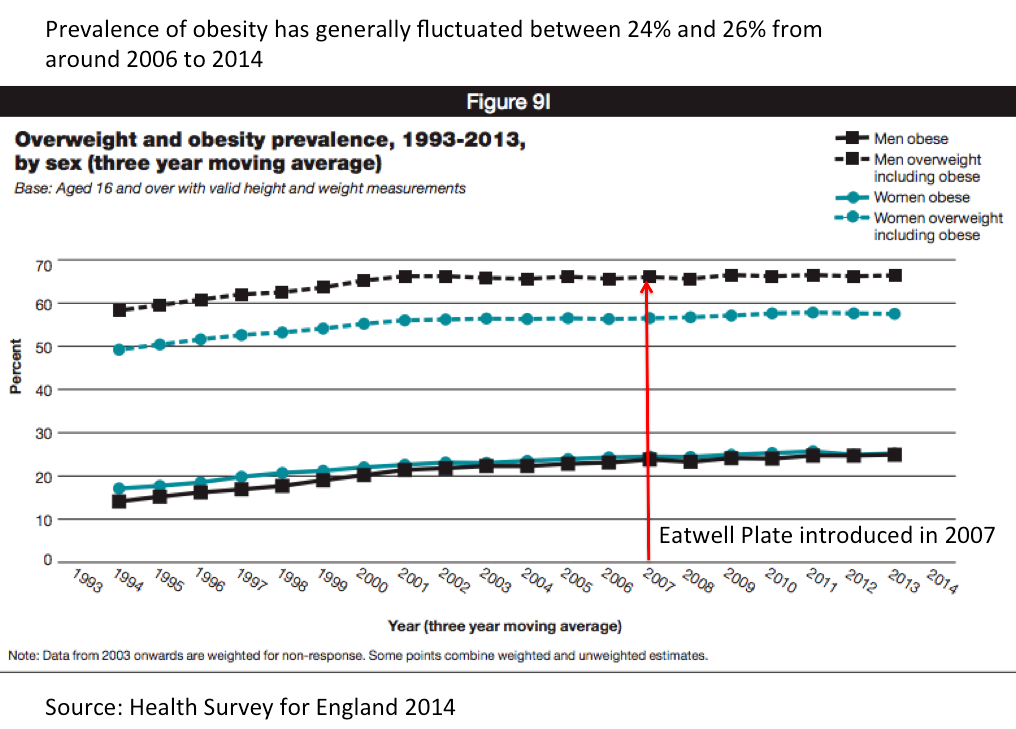
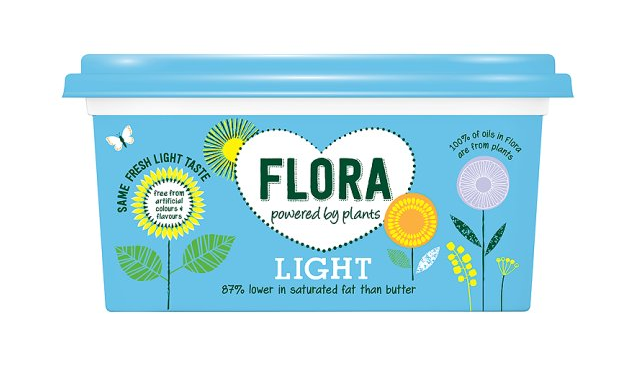


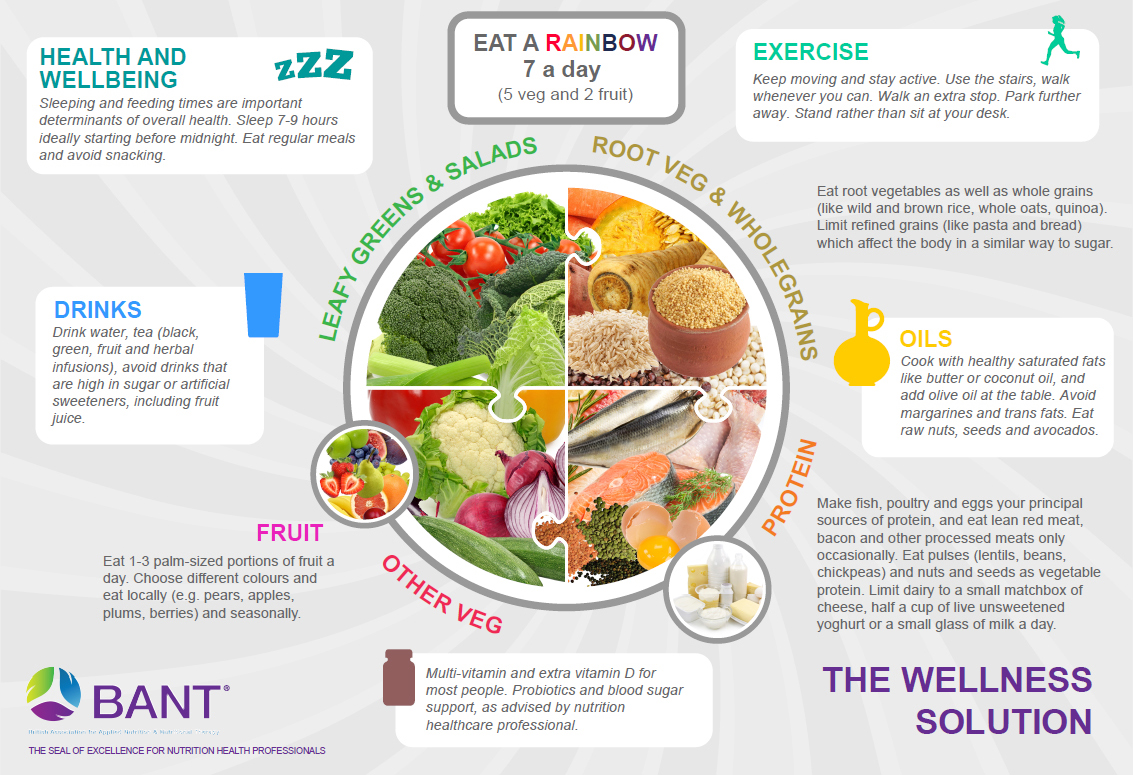

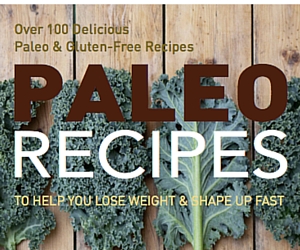
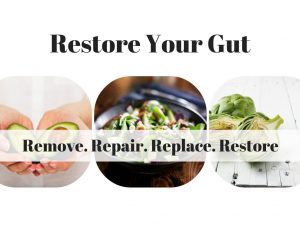


Excellent analysis of the so-called Eatwell guide, which is designed, it would appear, to keep us just as fat-and-unhealthy as we have always been. Like the Wellness Solution guide much better. One would think it would be common sense to have more protein and less starch anyway! The other issue is with processed, free-from, and diet foods — foods which have been processed to remove certain bits whilst leaving other bits in are chemically unbalanced and un-natural. Why would one want to eat such foods? I remember the first time I was told I was pre-diabetic. On my next shop, I went to the diabetic foods section and was shocked to see what was in this junk! It must be ten times worse for you than any sugar! Then there are the fat-free foods, full of extra ingredients, some of which I could not even pronounce. I think a lot of this has to do with mind-set. Many people want a magic pill, so they buy free-from, diet, fat-free and other so-called diet foods instead of just making the commitment to eating properly. Proteins, vegetables, proper fats and a few natural sugars plus a bit of fermented dairy will do me!